FARM & GARDEN: SPECIAL OFFERS FROM THE AUTUMN CATALOGUE
Here are our leading offers for Farm & Garden from the Autumn Catalogue. Prices may vary due to freight. 3pk of Crew…
Free Delivery when you spend $49 or more. (Weight Limits Apply – view more)
 Dog
Dog

Shop Tuckers great range of dog food, health care & wellness products today. Delivered or Click & Collect.
 Cat
Cat

Tuckers has a great range of cat food, health care & litter products for your beloved cat. Shop now.
 Horse
Horse

Tuckers carry a huge range of food, supplements, health care, hoof care and grooming accessories. Shop now.
 Chook/Bird
Chook/Bird

Tuckers range of food, accessories & health care products will keep your chooks & birds happy and healthy.
 Small Animal
Small Animal

Shop food and health care products for your little mates @ Tuckers. Delivered or Click & Collect.
 Farm/Garden
Farm/Garden

Tuckers carry a wide range of sheep & cattle products, plus everything you’ll need around the farm or garden.
 Dog
Dog

Shop Tuckers great range of dog food, health care & wellness products today. Delivered or Click & Collect.
 Cat
Cat

Tuckers has a great range of cat food, health care & litter products for your beloved cat. Shop now.
 Horse
Horse

Tuckers carry a huge range of food, supplements, health care, hoof care and grooming accessories. Shop now.
 Chook/Bird
Chook/Bird

Tuckers range of food, accessories & health care products will keep your chooks & birds happy and healthy.
 Small Animal
Small Animal

Shop food and health care products for your little mates @ Tuckers. Delivered or Click & Collect.
 Farm/Garden
Farm/Garden

Tuckers carry a wide range of sheep & cattle products, plus everything you’ll need around the farm or garden.
Home / Articles / Small Animal / Watch out, it’s snake season! Here’s an informative article about Snake Bites

Article written by Health Direct. Health Direct is a government-funded service, providing quality, approved health information and advice.
Knowing whether a snake bite is dangerous or not can be difficult. This article explains what to do — including providing the proper first aid treatment — if you are bitten by a snake.
It’s also important to be aware that bites from snakes can cause a severe allergic reaction (anaphylaxis) in some people. Learn more about first aid treatment for severe allergic reactions in the ‘anaphylaxis’ section below.
You should always provide emergency care if you or someone else is bitten by a snake — including cardiopulmonary resuscitation (CPR), if required.
Keep calm, and follow these steps:
If you can’t use a pressure immobilisation bandage because the bite is on the trunk or stomach, apply constant, firm pressure.
Do not apply a tourniquet, cut the wound or attempt to suck the venom (poison) out.
St John Ambulance Australia has a quick guide to the first aid management of snake bites.
The Australian Red Cross also has a handy infographic on how to treat them.
A pressure immobilisation bandage is recommended for anyone bitten by a venomous snake. You should firmly bandage the area of the body involved — such as an arm or leg — and keep the person calm and still until medical help arrives.
Follow these steps to apply a pressure immobilisation bandage:
St John Ambulance Australia’s first aid fact sheet includes information on pressure immobilisation bandages.
Some people occasionally have a severe allergic reaction to being bitten by a snake. Their whole body can react to the bite within minutes, which can lead to anaphylactic shock (anaphylaxis). Anaphylactic shock is very serious and can be fatal.
Symptoms of anaphylactic shock include:
If someone is experiencing anaphylaxis, call triple zero (000) for an ambulance.
If the person has a ‘personal action plan’ to manage a known severe allergy, they may need help to follow their plan. This could include administering adrenaline via an autoinjector (such as an Epipen) if one is available.
The Australasian Society of Clinical Immunology and Allergy recommends that for a severe allergic reaction, adrenaline is the only treatment. For further information, visit the Choosing Wisely Australia website.
For more information on anaphylaxis, including setting up a personal action plan, go to www.allergy.org.au.
In some cases, the person bitten by the snake may need cardiopulmonary resuscitation.
See healthdirect’s page on how to perform CPR for more information.
St John Ambulance Australia has a printable poster on first aid resuscitation procedures.
A dry bite is when the snake strikes but no venom is released. Dry bites are painful and may cause swelling and redness around the area of the snake bite.
Once medically assessed, there is usually no need for further treatment, such as with antivenoms. Many snake bites in Australia do not result in venom entering your body (known as envenomation) and so they can be managed without antivenom.
Because you can’t always tell if a bite is a dry bite, always assume you have been injected with venom and manage the bite as a medical emergency — call triple zero (000) for an ambulance.
Venomous bites are when the snake bites and releases venom into a wound. Snake venom contains poisons that are designed to stun, numb or kill other animals.
Symptoms of a venomous bite include:
In Australia, there are about 2 deaths each year from venomous snake bites.CHECK YOUR SYMPTOMS — Use our bites and stings Symptom Checker and find out if you need to seek medical help.
Venomous snakes can be identified based on any venom deposited on clothing or the skin. Do not wash the area of the bite, try to suck venom out of it, or discard clothing.
Do not try to catch or kill the snake to identify it since medical services do not rely on visual identification of the species of snake.
Antivenom is available for all bites by venomous Australian snakes.
Around 100 Australian snakes are venomous, but only 12 are likely to inflict a wound that could kill you. Australia has about 140 species of land snake, and around 32 species of sea snake.
Most snake bites happen when people try to kill or capture them. Don’t panic if you come across a snake. Back away to a safe distance and let it move away. Snakes often want to escape when disturbed.
Choosing Wisely Australia(Recommendations), St John Ambulance Australia(DRSABCD action plan PDF), Australasian Society of Clinical Immunology and Allergy (ASCIA)(Allergic reactions to bites and stings), St John Ambulance Australia(Severe allergic reaction (anaphylaxis) – managing a severe allergic reaction PDF), Allergy and Anaphylaxis Australia(Allergy & anaphylaxis), NSW Office of Environment & Heritage(Snakes), Australian Prescriber(Snake bite: a current approach to management), Medical Journal of Australia(Snakebite in Australia – a practical approach to diagnosis and treatment), National Centre for Farmer Health(Snake bite), St John Ambulance Australia(Managing a snake bite, PDF)
Learn more here about the development and quality assurance of healthdirect content.
Last reviewed: September 2020
Entire range - quick and secure delivery
Buy securely online and pickup at your local store
Call your local store and come on down to pickup
© 2025 Tuckers Pet & Produce.
